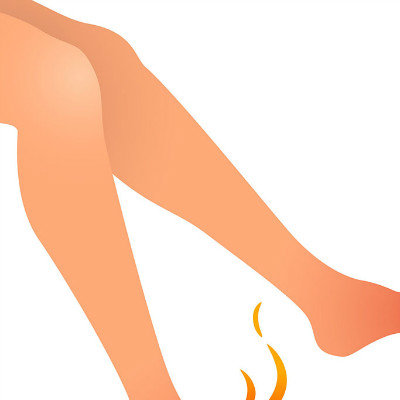The obvious symptom of chronic myelitis?
summary
Myelitis is a disease caused by infection or toxin invading the spinal cord. The onset is acute, and complete paraplegia can occur within a few hours to 1-2 days. Therefore, timely treatment is very important. Understanding the symptoms of patients with myelitis is helpful for early treatment. So, what are the abnormal manifestations of patients with myelitis? The obvious symptom of chronic myelitis? Let's talk about it
The obvious symptom of chronic myelitis?
Most of them are young adults. A few days or 1-2 weeks before the disease, there may be a history of fever, general discomfort or upper respiratory tract infection. Acute onset, often with back pain or thoracolumbar banded feeling, followed by numbness, weakness and other symptoms, more than a few hours to a few days symptoms develop to the peak, appear spinal cord transverse damage symptoms.

Paraplegia caused by thoracic spinal cord injury is the most common, such as cervical spinal cord injury is quadriplegia, and may be accompanied by respiratory muscle paralysis. In the early stage of spinal cord shock, flaccid paralysis, decreased muscle tone, disappearance of deep reflex and pathological reflex could not be induced below the lesion level. Usually, after 2-3 weeks, it gradually transits to spastic paralysis, and the muscle tension gradually increases, especially the extensor muscle tension increases obviously. The deep reflex appears and then increases, and the pathological reflex is obvious. At the same time, sometimes the muscle strength may begin to recover. The recovery usually takes several weeks and months, but eventually there are some residual signs. If the lesion is severe, extensive or complicated with urinary tract infection, the stage of spinal cord shock may be prolonged. Some patients may show flaccid paralysis for a long time, or spastic flexion limb paralysis after spinal cord shock. At this time, the tension of limb flexors is increased with slight stimulation, flexion spasm of both lower limbs, accompanied by sweating, erectile hair reaction and automatic excretion of urine and feces, It's called the total spinal reflex. The above situation often indicates poor prognosis, some patients can be paralyzed for life.

All kinds of sensations of the limbs and trunk below the damage level were impaired. In severe cases, they disappeared completely and were caused by the damage of bilateral spinothalamic tract and posterior funiculus. There may be a hypersensitive zone on the upper edge of the hypoesthesia area.

matters needing attention
1. The patients without complications can basically recover after 3 ~ 6 months, and take care of themselves. 2. After 6 months of complete paraplegia, EMG still showed denervation, MRI showed extensive intramedullary changes, and the prognosis of patients with more than 10 spinal cord segments was poor. 3. Complicated with urinary tract infection, bedsore and pneumonia, affecting recovery, leaving sequelae. 4. Acute ascending myelitis and high cervical myelitis have poor prognosis and may die of respiratory and circulatory failure in a short time. 5. About 10% of the patients developed multiple sclerosis or neuromyelitis optica














